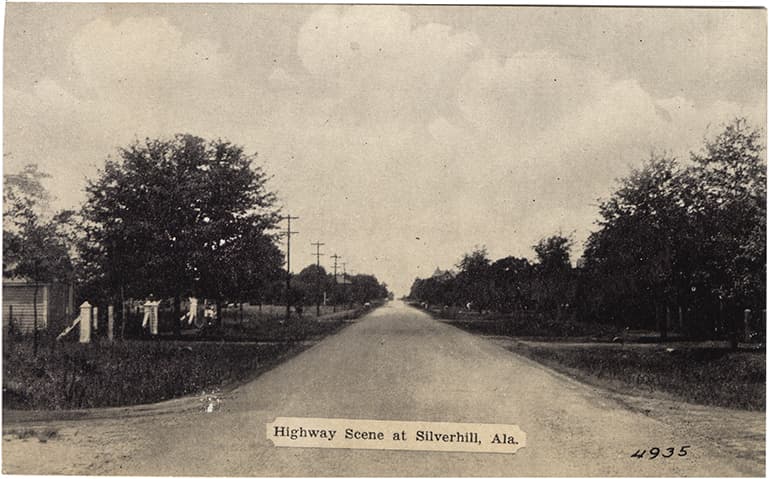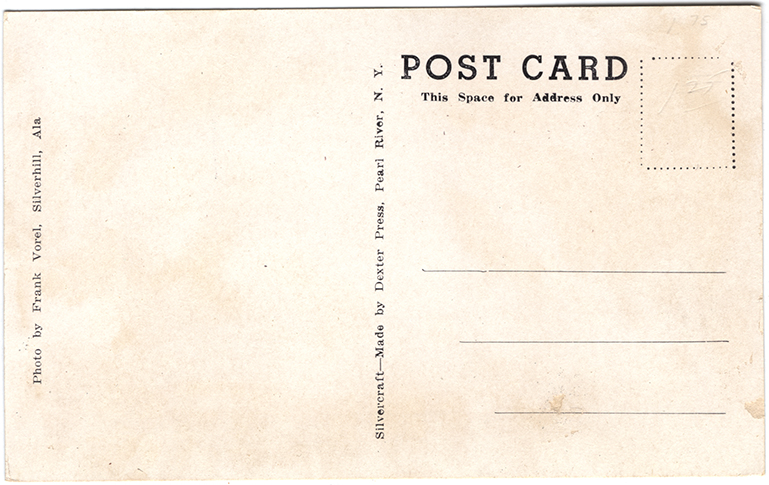Southwest Alabama Streets
Historical Streets of Southwest Alabama as displayed through the Traveling Exhibits
Postcards showcased on the Traveling Exhibits
Foley - Laurel Avenue
Foley is named for J.B. Foley, a Chicago businessman, who bought land in the area in 1901 and sold lots through his company the Magnolia Springs Land Company. Knowing that better access would result in more settlers, he persuaded the railroad to run a spur from Bay Minette to the area and used his own money to lay the rails. By 1905, the town was large enough to warrant a post office, and it was incorporated in 1915. This is a postcard of Laurel Avenue in the early 1910s.
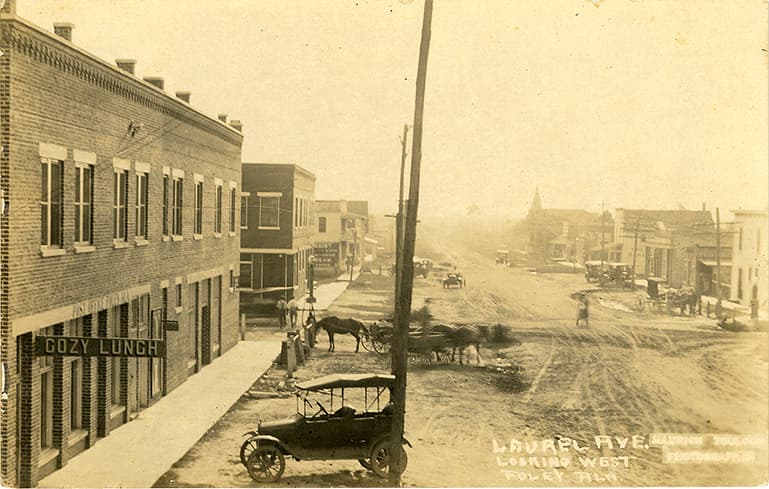
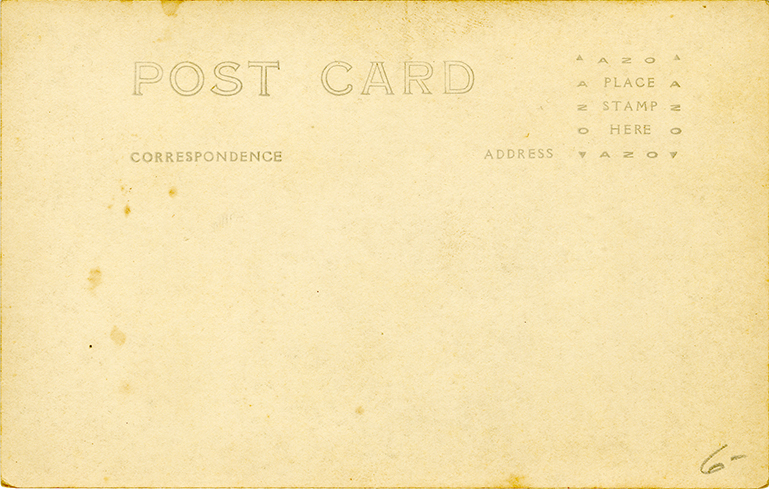
Brewton - Belleville Avenue
Around 1817, a sawmill was built near the Conecuh and Escambia rivers and the settlement of Newport began to grow around it. In 1861, the railroad was completed in the town which made it easy to send lumber by railcar and boat to the larger industries. The town was incorporated in 1885 and the name was changed to Brewton to honor a prominent local citizen. Brewton became the county seat of Escambia County in 1883. This postcard shows some of the extraordinary homes of the “timber barons” along Belleville Avenue.
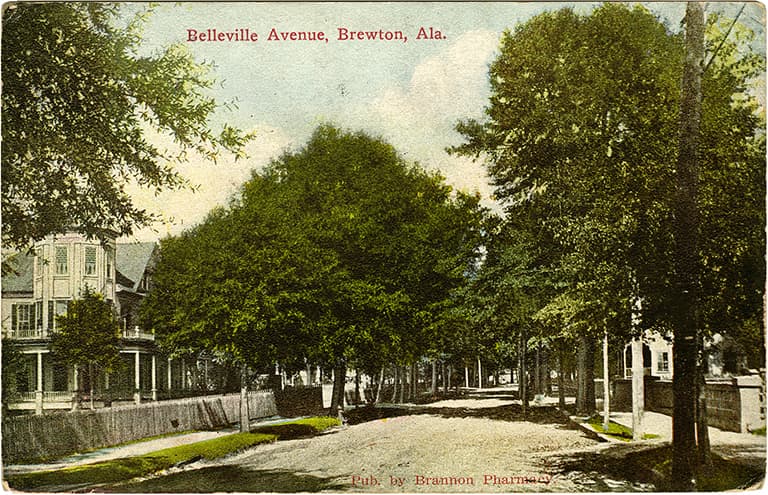
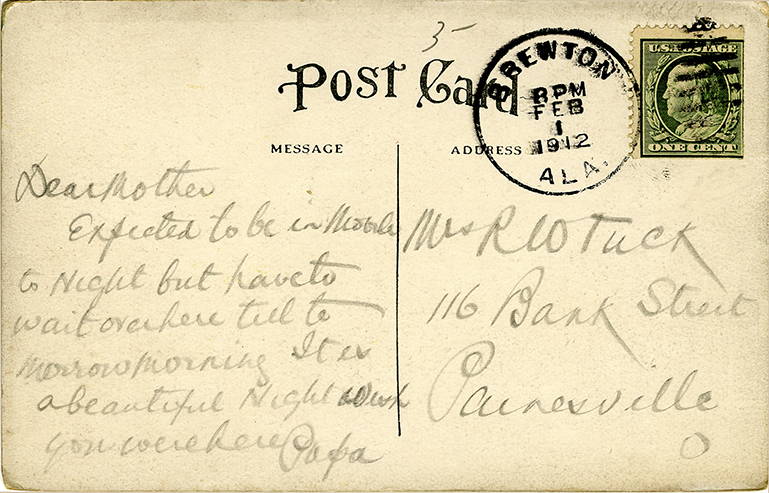
Transcription
Dear Mother Expected to be in Mobile to night but have to wait here till tomorrow morning. It is a beautiful night wish you were here Papa Addressed to: Mrs R. W. Tuck 116 Bank Street Painesville O
Citronelle - Oak Avenue
Citronelle, in Mobile County, owes its existence to the railroad. Representatives of the railroad laid out the town and named it for the abundance of citronella plants in the area. The town was promoted as a health resort because of its altitude and mineral springs. The first train ran on the line in 1852. The town was incorporated in 1892, and the library was constructed the following year. Citronelle lays claim to being the site of the last surrender of Confederate forces east of the Mississippi, on May 4, 1865. Oil was discovered in 1955 and Citronelle became known as the Oil Capital of Alabama. This is a postcard of Citronelle in the early 1900s.
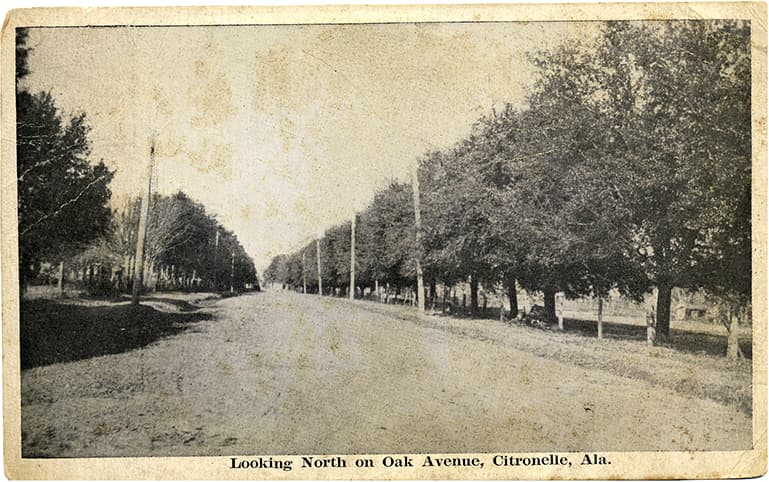
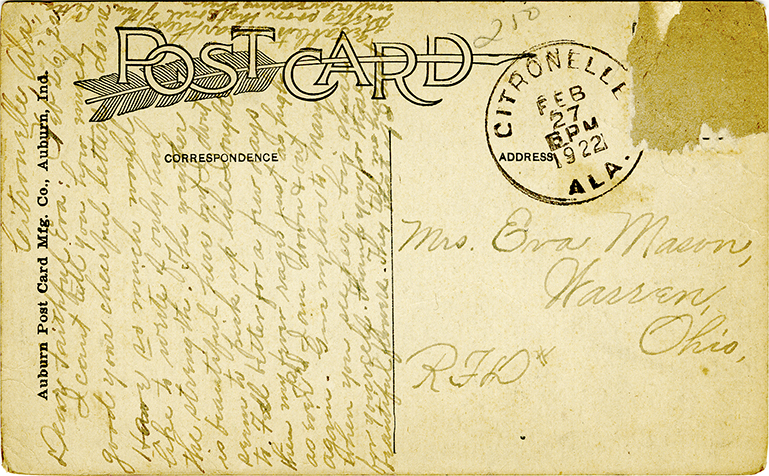
Transcription
Citronelle, Ala., February 26, '22, Dear Faithful Eva: I cant tell you how much good your cheerful letters do me Have so much would like to write if only had the strength. The weather is beautiful here but I dont seem to pick up like I ought to. Felt better for a few days then my fever rages just as high as ever and I am down & out again. Give my love to Mary when you see her- big share for yourself. thank you for those beautiful flowers. They tell me here that if I don't get able to [illegible] them pretty soon that some of them well be [illegible] Letta. Addressed to: Mrs. Eva Mason, Warren, Ohio, RFD#
Evergreen - Belleville Street
Evergreen is known as "the Emerald City" and it is the county seat of Conecuh County. The town was founded in 1819 and incorporated in 1873. Reverend Alexander Travis first called the town Evergreen for the abundance of surrounding green foliage, plants, and ferns. In 1882, a tornado hit the city, destroying every building except the Episcopal Church. On November 7, 1895, fire destroyed every business and house located on the east side of the railroad. Five days later, fire destroyed every business and house on the west side, but the residents rebuilt. This postcard was postmarked 1912.
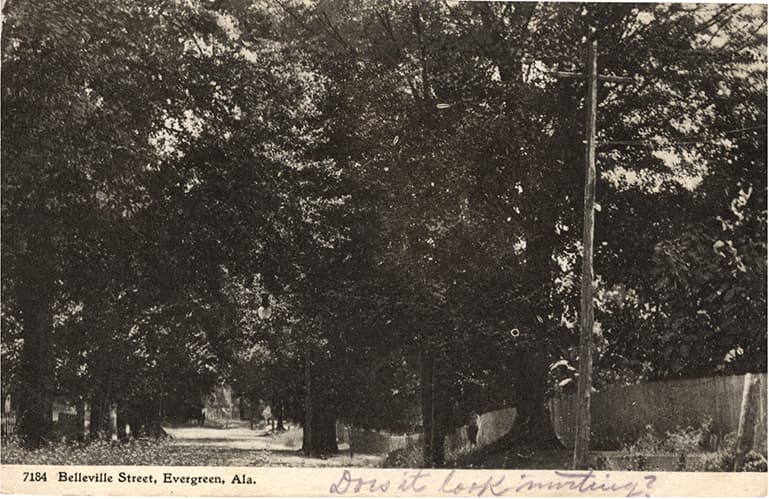
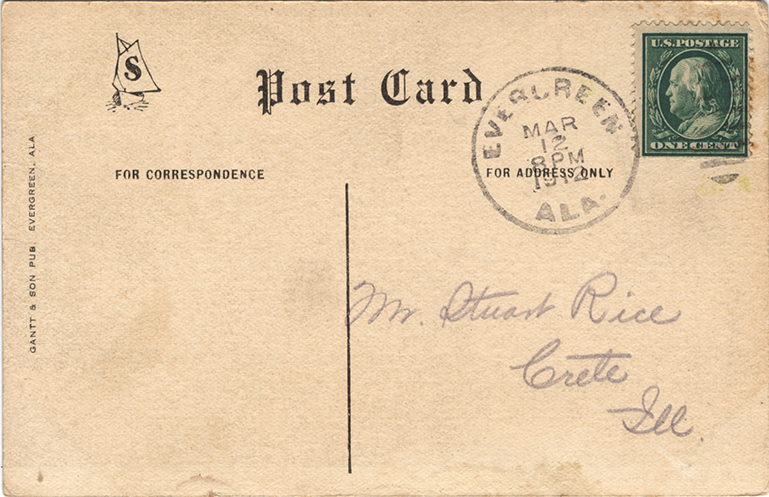
Transcription
Does it look inviting? Addressed to: Mr. Stuart Rice, Crete, Ill.
Mobile - Dauphin Street
Founded by the French in 1702, Mobile is the oldest city in Alabama. Mobile was under French, British, and English rule until it finally became an American city in 1813. It was first incorporated in 1814. Dauphin Street was one of the principal streets in the new settlement and it was named for the son of Louis XIV. In 1839, a fire destroyed the older wooden buildings on the street and the brick buildings we see today began to be built. Dauphin Street acquired such a reputation for quality that the slang phrase “Like walkin’ down Dauphin Street” came to denote anything of exceptional quality. This is a postcard of the street in the 1930s.
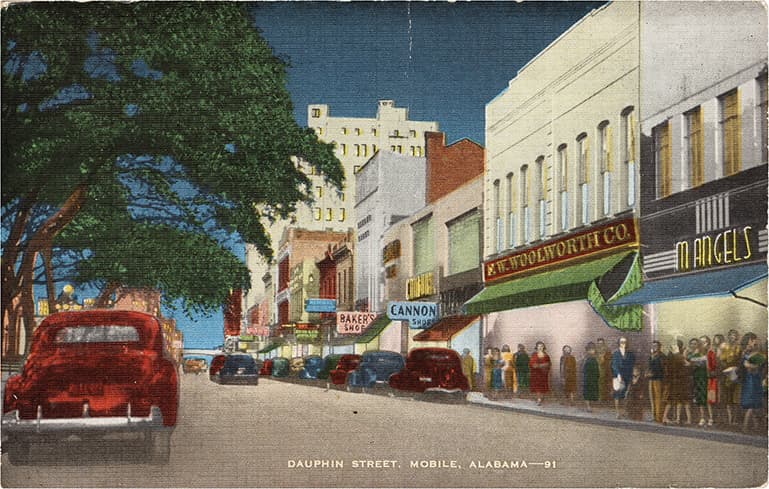
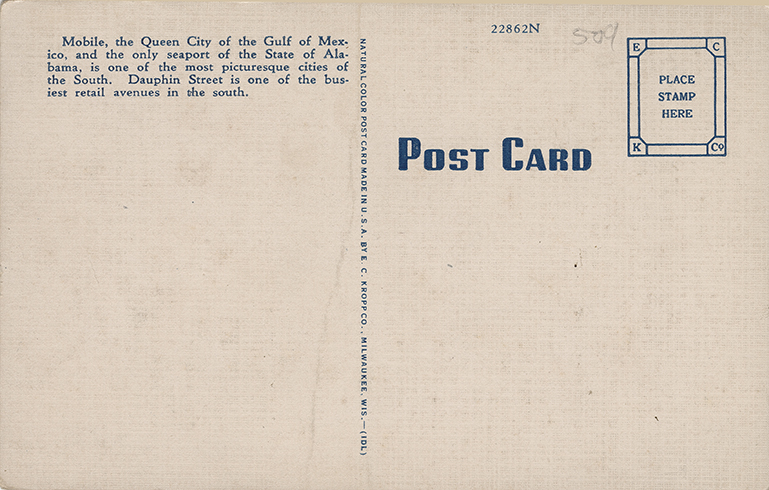
Mobile - Government Street
Government Street in Mobile was laid out and named following the demolition of Fort Conde. In the early 1820s the marshlands between the Mobile River and Royal Street were filled in with the debris from the fort. This street has traditionally been where Mobile's government-related functions were concentrated. It also had a reputation as the “mansion or millionaire’s row”. There was a time when Government Street was the most prestigious address one could have in Mobile. This postcard is a residential scene along Government in 1906 and shows the lacy iron grillwork hallmark of Mobile.
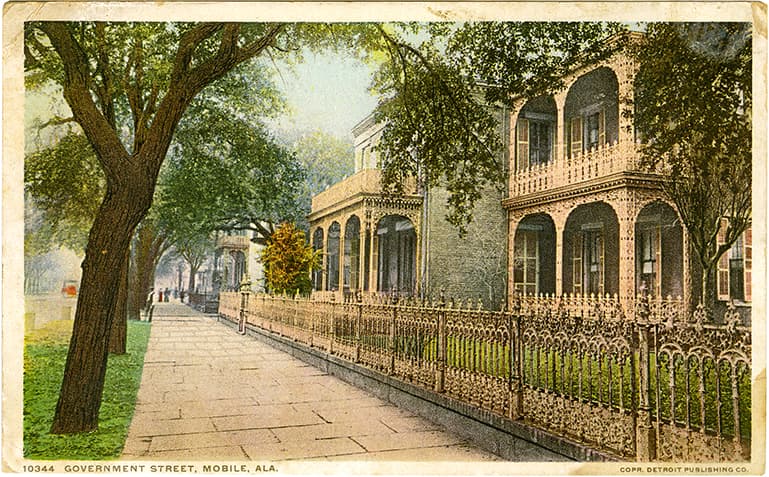
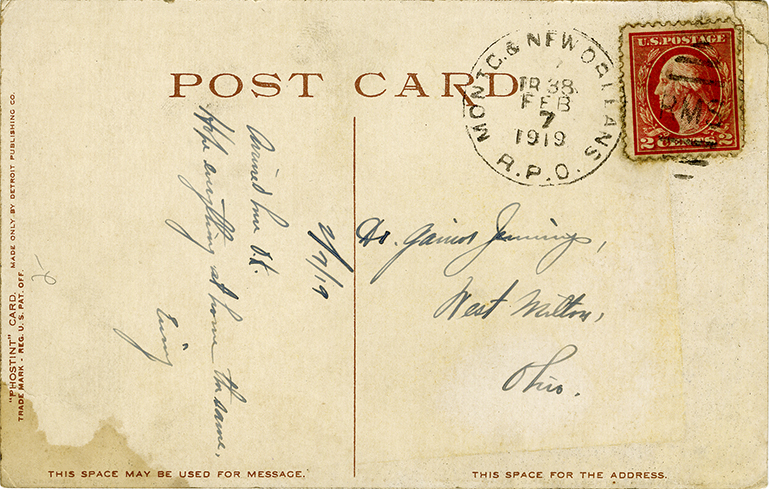
Transcription
2/7/19 Arrived here O.K. Hope everything at home the same. Ewing Addressed to: Dr. Gainor Jennings, West Milton, Ohio.
Mobile - Royal Street
This postcard shows the Royal Street business district in the early 1900s. This street is also well known because it is on the Mardi Gras parade route. America’s very first Mardi Gras was celebrated in Jean Baptiste Le Moyne Sieur de Bienville’s “Fort Louis de la Louisiane” (now Mobile) in 1703. Thus began an annual tradition, only occasionally canceled because of war. Mardi Gras in Mobile has now evolved into a mainstream multi-week celebration where parades and festivities engulf Royal Street in downtown Mobile.
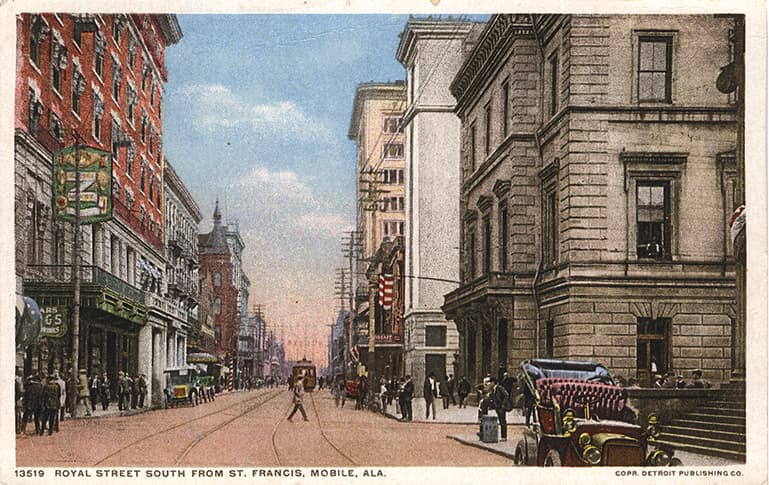
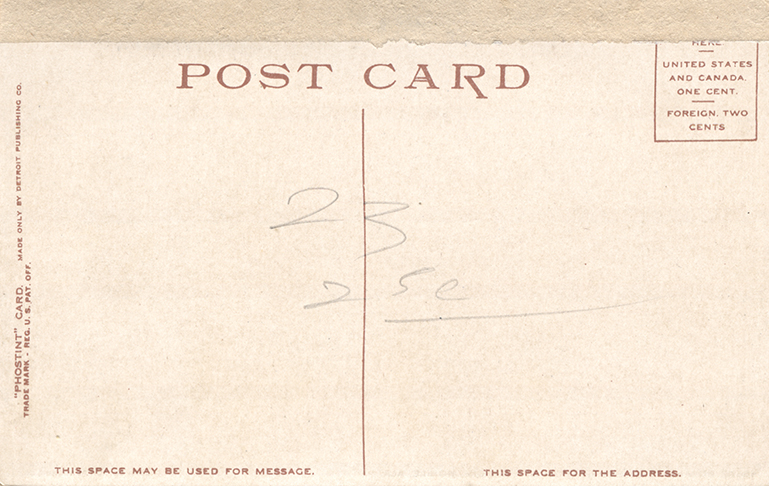
Silverhill - Highway Scene
Silverhill was established in 1897 in Baldwin County as a settlement for Swedish immigrants. The area was known as Silverhill because every payday the workers in the turpentine still went up the hill to get their silver. The first settlers suffered hard times because of the difficulty of getting groups to the market. In 1905, the railroad came through the area giving the town new life. Beginning in 1909, a group of settlers from Czechoslovakia (then Bohemia) moved to Silverhill to farm. The town was incorporated in 1926.
